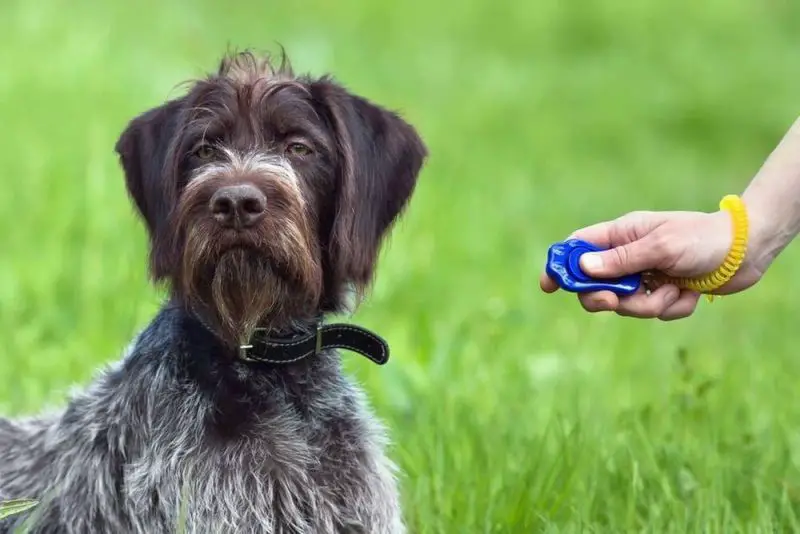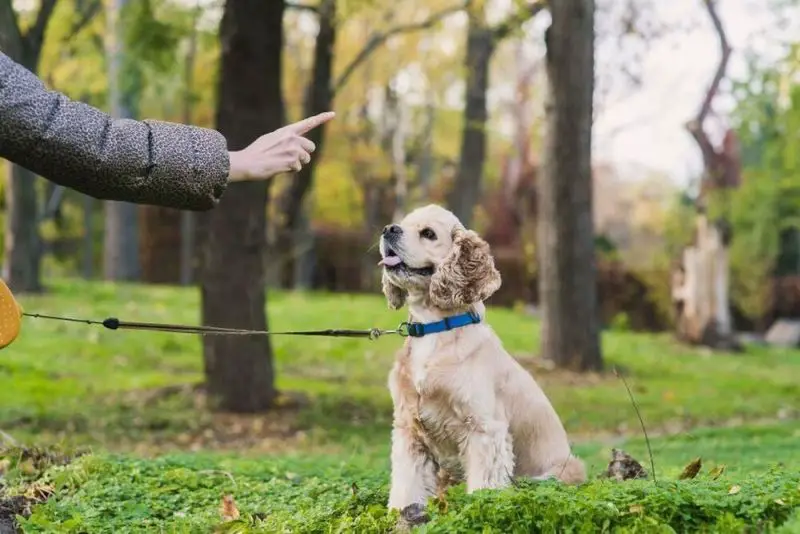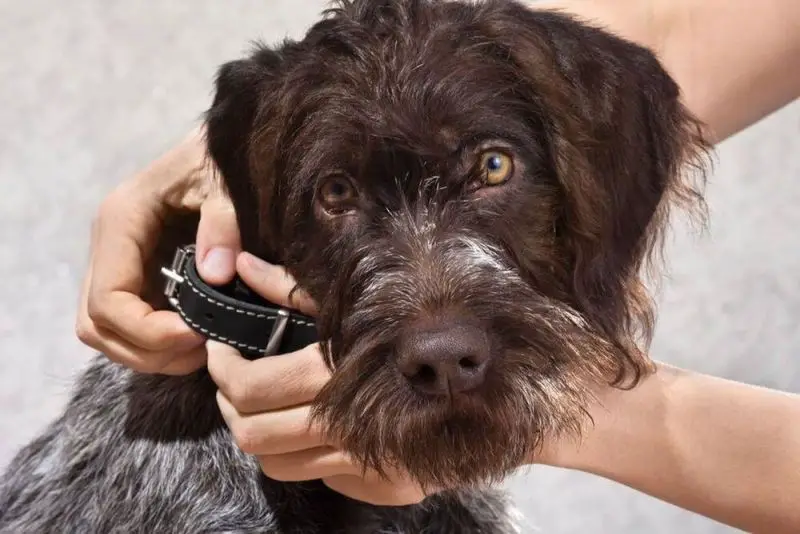When it comes to dog training styles, there are a lot of things that you can consider doing. Of course, like their owners, you would only want nothing but the best from your canine friends.
Don’t worry. You are not alone in this journey. There are pup owners like you too who would want to discipline their dogs.
With that in mind, there are different methods you can employ to train your dog to learn. In here, you’ll learn the most common dog techniques that are used in teaching pups. You will also get to know what are other owners’ frequently asked questions about the process of puppy training.
The different dog training techniques are listed below. These, however, are just some of the widely used dog training styles.
Alpha dog or Dominance
The alpha dog or dominance training is deeply rooted in a dog’s natural mentality. This type of training can be considered as the ones that are most embedded in the natural skills of your pup.
The alpha dog is one of the training styles that train your pup to create some kind of the relationship of any kind of appropriate submission and dominance. The theory that overlaps in this situation is that dogs see their family as a part of their pack. It is this social structure or pack that the alpha dog is strong based in.
The members of the pack would need to follow the alpha dog, which in this case is considered to be their human owners.
The methods used in the process would include a thorough understanding of dog behaviors such as body language. This won’t only be a learning curve for your canine, but you would also have to assert some kind of authority and dominance too.
Examples of this would be walking first, and the dog will follow, walking your pup on a leash, have your dog obey you first like sitting before opening the door. Basically, you are the leader of your pup. This is the alpha pup or dominance training method.
Positive Reinforcement
Another dog breeds training that you can teach your dog is positive reinforcement training. This is one of the most traditional dog training styles that maybe you are most familiar with.
The theory behind it is that it’s fairly easy to get. The positive reinforcement method comes in the sense that you shall reward treats to your pup when they have done something right. It can also be done when your pup did a repeated good behavior, and it’s going to be followed by a reward right after.
In that sense, any bad behavior won’t get rewarded, although punishment for this kind of training won’t mean that you would have to punish your pup physically. Instead, the removal of treats or the sign of positive reinforcement training would be enough.
This reinforcement training method would need you to reward your dog as soon as they have done something right. In this way, your canine would be able to associate that for every good deed that they do; they shall soon be rewarded with a treat. This method could also be overlapped with clicker training.
The thing about this training style is that you would have to be consistent in rewarding your pup so they would associate the good deeds to a reward until they have come accustomed to it and these good behaviors become a part of their natural habit.
Scientific Training
Another pup training style would be in the form of scientific training. This style is harder to define compared to different training ways. However, this style usually focuses on the cognitive behavior of your dog. In some sense, it kind of overlaps with positive reinforcement and clicker training.
Animal behaviorists are the ones who are in charge of creating new studies and experiments to see which type of dog training technique would suit best for different kinds of dog behaviors.
Scientific training isn’t as easy to employ. You would have to need extensive knowledge of your dog’s capabilities and limitations.
Always being on the lookout for new research and the latest studies would also be an essential part of scientific training. Because of its complexity and the technicalities that come with it, this type of method is usually used by professional trainers.
It’s recommended that you use this kind of method on your dog once you have an extensive scientific background on their behavior.
Clicker Training

There’s a very thin line between clicker training and positive reinforcement training method. Both styles are based on operant conditioning, which is heavily reliant on teaching your dog to associate their good deeds with rewards. This kind of training can also be considered as a form of positive reinforcement instead of being its own category of puppy training technique.
Clicker training involves the use of a device or clicker, which makes quick and sharp noises to signal to a dog that wanted behavior from them has been achieved.
The only difference is that by using this method, the dogs could easily associate the clicker with the exact moment the desired behavior is attended. The instance that they have done it, they are going to be rewarded as soon as possible. In this way, they would be able to associate what exactly they have done.
The use of this method is recommended for those dogs who are just learning new tricks and could help shape the method style as a way of introducing the lesson to more complicated tricks.
MUST READ: Best Dog Training Collars
Electronic Training

The use of electronic training as one of the pup training techniques is something that most people aren’t fond of using. This is because this method would require the user to use an electric collar on the pup.
The electric collar would then deliver a shock or spray of citronella when the dog isn’t performing the desired task. This can be considered as the opposite of positive reinforcement. Instead, the wrongdoings of the pup are being focused upon using this technique.
The advantage of using this method, however, is that you can train your dog at a distance without the use of a leash.
Although you would have to weigh the pros and cons of this device as it heavily relies on punishment instead of reward systems.
It can also create some tension and stress on your dog and would prompt them to act in fear than anything else. This type of training isn’t recommended for use by starting and average dog owners. Most of the times, the best results using the electronic training method can only be seen when professional dog trainers do it.
Model Rival or Mirror Training
Another type of pup training method you can use is the model rival or mirror training method. This would heavily rely on the fact that pups could learn by observation. In here, you are to provide another model to act as your dogs’ rival.
Your pup would have to learn that the model, which in this case could also be a human, would be their rival when it comes to getting the rewards or resources presented in front of them.
You can train or scold your dog by doing these things to your model. Expect that your dog could learn from mimicking what they have seen your model do.
This method, however, cannot stand on its own; you would still have to incorporate both positive reinforcement and operant conditioning in this part.
Relationship-Based Training
Another pup training technique that you can teach your dog is relationship-based training. This, by far, is the most complex type of training since it encompasses and consists of different kinds of dog training styles.
However, this method would focus more on the personal approach of the dog and its owner. Hence, it’s safe to say that any kind of relationship-based training is far different from the rest. There are no two relationship-based training methods that are the same.
This would entail that the owner should understand the body language of their dog, and this goes the same for the dog to its owner.
The owner too should also know what kind of rewards their dog would appreciate the most, and what are the most basic needs of the dog would have to attend to before the start of their training.
You can also incorporate some of the positive reinforcement methods so you can encourage your dog to repeat the same good deeds once again.
MUST READ: Best Flea Collars For Pets
Modern vs Traditional Dog Training: What’s the Difference Between These Two Training methods?

Traditional pup training methods are more focused on developing the cognitive abilities of the dogs. Modern traditional methods, on the other hand, focuses on building a relationship with your dog. Some examples of the traditional training of dogs would be positive reinforcement, electric training, and alpha puppy or dominance means of training.
Newer methods, like the scientific method and relationship-based training, are two of those most famous modern training styles. The only difference between the two methods is that modern ones focus on building the relationship of the pup with its owner rather than just having their own actions trained.
When is the Best Age to Start Training Your Dog?
One of the most frequently asked questions of dog owners would be when would be the best age of their dog would be best to train them. You can start training your dog with the most basic obedience training methods as early as seven to eight weeks of age.
Although it’s not really recommended that you employ strict pup training techniques around this age, it’s nice to at least give them the most basic type of techniques that they could do eventually in the future.
Frequently Asked Questions About Dog Training
When Employing Pup Training Styles, Should You Pull On The Leashes?
Yes, that’s something that you should do, especially in the dominance of pup training. Make sure that you tug your dog’s leashes lightly. This is important because your dog would be able to follow your suit.
Is Treat Training Considered To Be Bribery?
This could be one of the concerns that some dog trainees would have in mind. But you shouldn’t feel bad about this. Treat training is not considered to be bribery. You can do this, especially in positive reinforcement training, as a form of their rewards when they have done good deeds. In this way, they could associate treats with good behavior.
What Is The Right Attitude To Have When Training My Dog?
One of the best mindsets and attitudes that you should have is patience. It’s not easy to train your dog! This is something that you should understand. Especially if you are just new to training your dog, then it’s possible that it could take you some time before you can get the right method.
At the same time, you would have to give your pup some time to get acquainted with what you’re going to teach them. That’s why patience is very important. You cannot expect that your pup would immediately learn the tricks that you’re going to teach them on an overnight basis.
One thing that you should know about having to train dogs successfully is that it requires consistency and repetitions. This is the main reason why patience is indeed the most important attitude that you should have as a dog trainer.
Is My Dog Too Old or Too Young To Be Trained?
No, when it comes to training your dog, there’s no age limit. They could be trained at any age. However, you would expect that some younger pups would have a harder time concentrating and would need repetitions and follow-ups.
When the dog is too old, it may be a bit harder to get them to learn new habits. As the saying goes, “it’s hard to teach an old dog new tricks”, that’s also the concept that goes in this.
So basically, the answer here is that you can train your dog at any age. However, their age would definitely affect their mental capacity to obey and remember what kind of tricks that you are teaching them.
Conclusion
There are different kinds of training styles you can teach your dog. If you’re planning on teaching your dog some tricks, you would have to focus on one method. Focus on how you’re going to employ these methods before you train your dogs. With a little bit of patience and understanding, you are guaranteed to get the rhythm of pup training as soon as possible!
RELATED POST:
- Best Harness For Pugs
- Best Remote Dog Training Collars
- Why Does My Dog Sleep On My Bed?
- Why Is My Dog Acting Weird?
- Why Does My Dog Sleep At My Feet